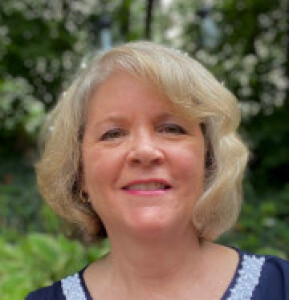Jean-Marie Galing's collections
Outside Fun
<p>See: Where are these people? What are they doing?</p><p>Think: Have you ever done something like that outside? </p><p>Wonder: I wonder what it would be like to go there. What would I see, smell, taste, touch, or hear?</p><p>Choose an image and imagine yourself being in that place. Then use that as inspiration for a drawing, painting, or collage. </p>
 Jean-Marie Galing
Jean-Marie Galing
11
New World Foods
<p>These foods were "discovered" by explorers who traveled to the "New World" (North, Central, and South America). They brought back seeds and introduced these foods to people in Europe. What effects do you think this had on Europeans? </p>
<p>Examine drawings of each food. How did the artist use line to show texture and/or value? </p><p>Examine the stamps: How did the artist use colors and shapes to create a design that is clear on a tiny stamp?</p>
<p><br /></p>
<p></p>
 Jean-Marie Galing
Jean-Marie Galing
24
Mystery and Fantasy
<p>These artworks are <strong>enigmatic</strong> - "mysterious, puzzling, hard to understand, mystifying, inexplicable, baffling, perplexing, bewildering, confusing, impenetrable, inscrutable, incomprehensible, unexplainable, unfathomable, indecipherable." They are open to interpretation. </p><p>Look at one or more of these artworks. How did the artist create a sense of mystery or fantasy? What do you think it could mean? </p>
 Jean-Marie Galing
Jean-Marie Galing
16
Memorable Moments
<p>Look at the images. . . </p>
<p></p>
<ul><li>What is happening?</li><li>Who do you think these people are?</li><li>Do you have a memory of doing something similar? </li></ul><p>ART MAKING CHALLENGE: Create an artwork that depicts a memory of something you enjoyed with family or friends. The artwork could be a drawing, painting, or collage. </p>
<p></p>
 Jean-Marie Galing
Jean-Marie Galing
9
Medallions
<p>Work with a partner or partners to analyze each object:</p>
<ul><li>What do you think the symbols mean?</li><li>Are there words that help describe it?</li><li>What patterns can you find?</li><li>Does the design show bilateral symmetry, radial symmetry, or is it asymmetrical?</li></ul><p>ART MAKING CHALLENGE: Design a medallion to commemorate something important to you. Some possibilities:</p><p></p><ul><li>An accomplishment</li><li>A special event you participated in</li><li>A family tradition</li><li>A personal interest</li></ul><p>The final artwork could be a drawing, painting, collage, clay slab, or foil repousse.</p><p></p>
 Jean-Marie Galing
Jean-Marie Galing
28
Human Figure: Abstract vs. Realistic
<p>Look at the artworks and decide which are realistic and which are abstract. Play the sorting game and put the images in the right folder.</p>
<p><br /></p>
 Jean-Marie Galing
Jean-Marie Galing
19
Human Figure
<p>This collection supports learning in the Grade 4 gesture drawing and wire sculpture lessons. Activities:</p>
<ul><li>Realism vs. Abstraction: students sort sculptures of the human figure into two categories (realistic or abstract). Describe the ways that some artists abstract the human figure.</li><li>Compare contrast 2D/3D: identify the shapes an artist used to portray the human figure in a gesture drawing, then identify the equivalent forms used in a sculpture. Record findings in a T-chart.</li></ul><p><br /></p>
 Jean-Marie Galing
Jean-Marie Galing
20
Houses
<p>Images support learning in first grade "Dream House for My Family" lesson. For architecture puzzle activity, print selected images and cut them into pieces that focus on parts of the building. Allow table groups to work together to reassemble the house image and name the parts of the house. </p><p>Discuss images of model houses to introduce the lesson challenge: <em>Create a 3-dimensional model of a dream house for your family.</em></p>
 Jean-Marie Galing
Jean-Marie Galing
11
Figures of Interest
<p>People from different times and places have created human figures in clay. Look at some of these figures and consider:</p>
<p></p>
<ul><li>What do you know about the figure? What do you see that makes you think that?</li><li>How did the artist show the interests of the figure?</li><li>What did the artist do to make the figure visually interesting?</li><li>For whom might this artwork be special?</li></ul>
<p>If you were to create a self-portrait in clay, what clues would you add to tell others about yourself? What special object might you include?</p>
<p></p>
 Jean-Marie Galing
Jean-Marie Galing
13
Festivals
<p>Everyone enjoys a festival or celebration! Let's look at some. . . </p><ul><li>Observe images and guess which culture each represents.</li><li>Play "I Spy Juxtaposition." Work with a small group to examine an image and find where the artist has juxtaposed symbols or text with the image to create meaning. </li><li>What might you include in an artwork about a festival or celebration? Would there be dances, special music, food, clothing, or activities?</li></ul><p>Art making challenge: Collaborate in a small group to create a design for a booth, stage, or other area for a cultural tradition at a festival. Designs will be combined into a festival mural.</p>
 Jean-Marie Galing
Jean-Marie Galing
18



